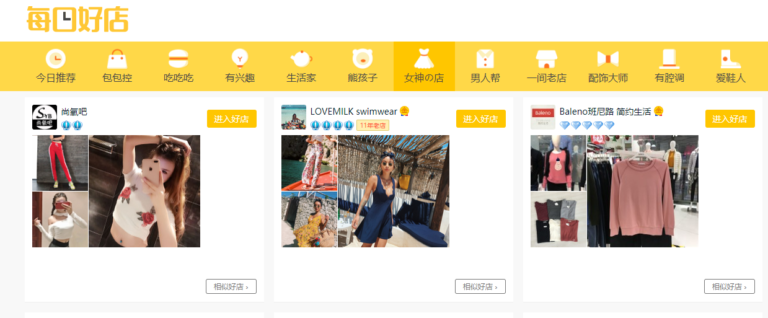Chinese ECommerce Size USD 204.1B more than Double US Online Retail Sales USD 98.1B
Purchasing power and retail demand vary considerably, due to large regional disparities and the rural-urban income gap in China. China’s retail market is therefore very fragmented and composed of many small and medium-sized retailers, unlike the United States, where large retailers dominate.
China is stealing the spotlight to the US in online retailing.
According to the National Bureau of Statistics of China, as of the first quarter of this year, Chinese consumers have made huge purchases online worth almost 1404 billion yuan (204.1 billion US dollars), more than Double online retail sales in the US ($ 98.1 billion). Indeed, China’s online sales rose 32.1 percent in the same quarter, from 1063.2 billion yuan (154.5 billion US dollars) in the same quarter last year.
The Chinese and US revenue are not very comparable because China’s report includes travel services sold on online sites such as those operated by the two largest e-commerce companies in China , Alibaba Group Holding Ltd. and JD.com Inc. However, the Chinese statistics agency hasn’t considerate the sales to sites like Xiecheng, a Priceline online travel site. Even with that proviso, it is clear that Chinese consumers are doing much more online shopping than their US counterparts.
ONLINE RETAIL SALES IN CHINA MORE THAN DOUBLE US E-RETAIL
The growth of retail sales is favored by Chinese middle class consumers who thus improve their lifestyle in various categories. Among the key sectors of overall retail growth were entertainment and office supplies with growth of 14.8%, telecommunications equipment (11.0%), sporting goods (17, 3%) and the home decor (14.8%).

Key indicators of the growth of online retail sales in China
One of the key indicators of the growth online retail in China is the steady increase in the volume of packages being shipped to the territory. According to the China State Advertising Bureau, in the first quarter of 2017, Chinese shipping companies delivered 7.59 billion packages, an increase of 31.5% compared to the same quarter of Last year. About 70% of these deliveries are products ordered online.
Chinese people living outside large cities remain potential large consumers online, as they haven’t access to shopping centers in metropolises such as Beijing and Shanghai. The National Bureau of Statistics reports that in the first quarter of 2017 rural residents bought 250.43 billion yuan (36.4 billion US dollars) online, an increase of 36.6 percent over the year former.
Consumers increasingly have a large number of channels to which they can make purchases. They can not only make their purchases on websites, but also order directly from other platforms like social media. In addition, Chinese consumers benefit more from cross-border e-commerce, buying much more from imported products because it is now easier to buy high-end products online.

Global brands and retailers are expanding rapidly in China through cross-border sales. According to data released recently by Shanghai Customs officials, the value of e-commerce orders for overseas products processed by Shanghai Customs reached 360 million yuan (52.4 million US dollars) in the first quarter of 2017, almost double the number over the same period last year.
In 2013, a free trade area was created in Shanghai, which was the first test of a Chinese government policy allowing Chinese consumers to buy online at foreign sites.
China, the world’s biggest online market
China is now the world’s biggest online market and is expected to reach nearly $ 1.7 trillion by 2020, up from $ 750 billion last year. The anticipation of the number of Chinese consumers buying online will increase by an additional 200 million in the coming years compared to 460 million last year.
Alibaba Group, China’s largest online merchandiser, reported that the “core commerce” revenue increased by 45 percent from last year to $ 6.7 billion the last quarter.
The next phase of growth in online market in China will be fueled by several trends, including the expansion of the variety of products available online; Increased consumer spending in small towns that are increasingly making online purchases; And new “omnichannel” initiatives, the combination of online and offline resources by the country’s largest e-commerce platforms in partnership with local retailers.
See Also







The Chinese e-commerce giants did not expect this. Despite the lifting of containment measures, e-commerce continues to break records in China. It is no longer a substitute for shopping, but rather a new standard. It seems that the Chinese have got used to this new way of consuming.
The world’s second-largest economy has just posted solid figures for the second quarter in a row due to the easing of containment measures. Chinese consumers, who for several months had to rely on the Internet to make their purchases, have become accustomed to a new mode of consumption. E-commerce continues to gain momentum and the shift from physical to online shopping is becoming a habit for consumers.
Some sectors are benefiting more than others from this underlying trend. Although already very established in China for several years, in particular with the strong development of Meituan, food delivery has increased by more than 65%. More and more Chinese have had meals delivered to their homes despite the end of confinement. Meituan rightly said that the number of new sellers on its platform increased by more than 110% compared to last year in the second quarter